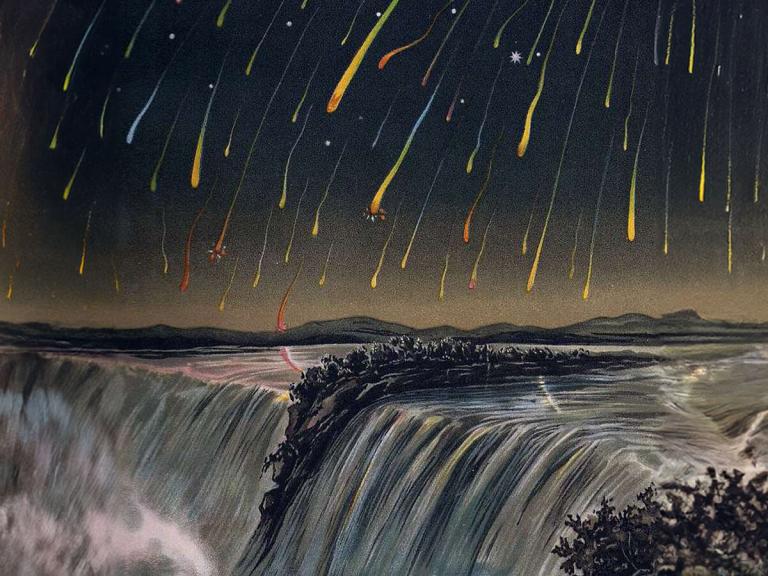
If you missed last December’s meteor shower peak, next year’s Christmas season is due to feature another. The Geminid meteor shower is an annual meteor shower that hits between November and December every year. Next year’s shower is predicted to last from November 19 and December 24. November and December are peak times for star gazers to catch some interesting phenomena as the Earth’s orbit passes through two different meteor groups. The Geminid meteor shower is so-called due to the fact that the Earth’s orbit passes through a group of meteors that seem to originate from the Gemini constellation. Another group, the Leonid meteor shower, emanates from the Leo constellation. Typically, the Geminid meteor shower tends to be the more spectacular of the two, with up to 150 meteors passing through the atmosphere per hour. The Leonid typically peaks at about 10 to 15.
However, about every 33 years, the Leonid meteor shower intensifies, sometimes to spectacular scales. On November 12th and 13th in the year 1833, so many meteors fell during the Leonid meteor shower that some people thought the world was ending. During that shower, as many as 150,000 meteors per hour fell through the sky. The Georgia Journal reported that one farmer was so terrified, he took cover under his home. “The world is now actually coming to an end, for the stars are falling,” he was reported to have said. Joseph Smith, the founder of the Church of Jesus Christ of Latter-day-Saints, took it as a sign of the impending Armageddon. “I arose, and to my great joy, beheld the stars fall from heaven like a shower of hail stones; a literal fulfillment of the word of God as recorded in the holy scriptures as a sure sign that the coming of Christ is close at hand,” he wrote. Native American tribes referred to it as the “night the stars fell.”
A Yale professor by the name of Denison Olmstead printed a request for people to report their sightings to him so that he might study further. “As the cause of ‘Falling Stars’ is not understood by meteorologists, it is desirable to collect all the facts attending this phenomenon, stated with as much precision as possible. The subscriber, therefore, requests to be informed of any particulars which were observed by others, respecting the time when it was first discovered, the position of the radiant point above mentioned, whether progressive or stationary, and of any other facts relative to the meteors,” he wrote.
History is filled with such reports of strange phenomena being witnessed in the sky. In 1561 over the skies of Nuremberg, residents reported “a dreadful apparition.” A broadsheet created by local artist Hans Glaser described the scene as a sort of aerial battle. He described some fighting globes and cross-like shapes, as well as a black spear that tore across the sky. Glaser took it as a sign that God was calling on the people to repent. “Whatever such signs mean, God alone knows. Although we have seen, shortly one after another, many kinds of signs on the heaven, which are sent to us by the almighty God, to bring us to repentance, we still are, unfortunately, so ungrateful that we despise such high signs and miracles of God,” he wrote. What exactly people saw in the sky has not been confirmed, though some have posited it could have been an optical illusion known as “sundogs,” which can make it appear that there are multiple suns in the sky.
Even further back, in the 8th century in Ireland, stories began of ships being seen in the sky. In some of the earliest accounts, King Domnall along with others, reported seeing three ships sailing through the air while Domnall attended the Assembly of Tailtiu. By the 13th century, the story had expanded to the ship making anchor at a church in Clonmacnoise. A sailor was reported to have swum down through the sky to release the anchor that had attached itself to the church. When the people tried to get hold of the man, he acted as if he was drowning. They released the man, and he “swam” back up to his ship. Such stories can be found in France and Bristol as well. Of course, there have been fantastical explanations (UFOS) and more practical explanations (meteor showers, mass hallucinations) offered up to explain such phenomena, but one thing remains true: The sky remains a place of wonder for those looking up to its great big expanses.


